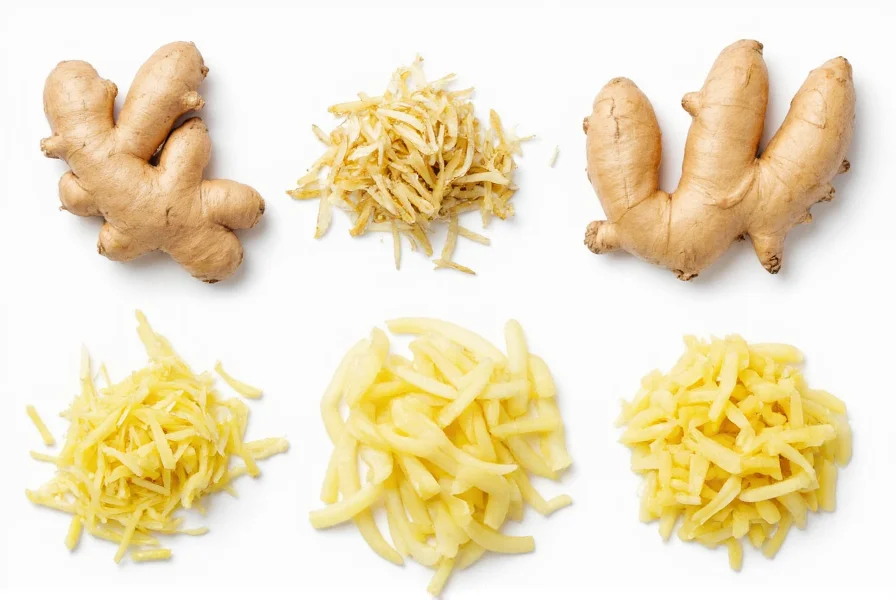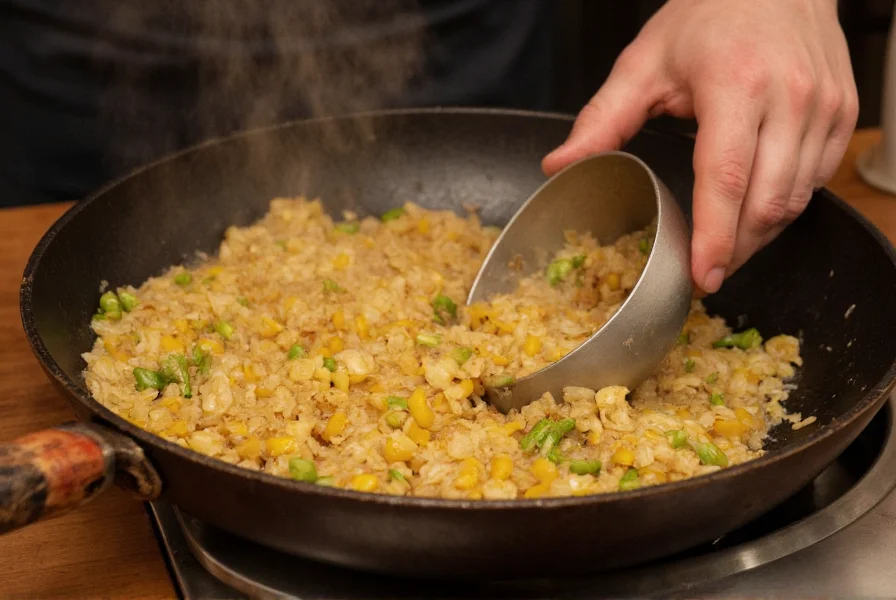Ginger transforms dishes with its warm, spicy-sweet flavor and aromatic complexity. When cooking with fresh ginger, always peel it first using the edge of a spoon for minimal waste, then grate, slice, or mince based on your recipe's needs. Add ginger early in cooking for deeper flavor integration or toward the end for brighter, more pronounced notes. This versatile root pairs exceptionally well with garlic, citrus, soy sauce, and chili in both savory and sweet applications across global cuisines.
The Essential Guide to Cooking with Ginger
Mastering ginger in the kitchen elevates countless dishes from ordinary to extraordinary. This rhizome—often mistaken for a root—brings distinctive warmth and complexity to recipes worldwide. Understanding how to select, prepare, and incorporate ginger properly makes all the difference in your culinary creations.
Understanding Ginger Varieties for Cooking
Not all ginger is created equal when it comes to cooking with ginger. The most common variety, Zingiber officinale, appears in three primary forms:
- Fresh ginger - Firm, plump knobs with smooth skin containing the most vibrant flavor
- Young ginger - More tender with thinner skin and milder heat, ideal for pickling
- Mature ginger - Fibrous with stronger heat, perfect for long-cooked dishes
When selecting fresh ginger for cooking, look for pieces that feel heavy for their size with taut, unwrinkled skin. Avoid any with soft spots or visible mold. Properly stored in the refrigerator, fresh ginger maintains quality for up to three weeks.
| Ginger Form | Best For | Flavor Intensity |
|---|---|---|
| Fresh grated | Stir-fries, marinades, dressings | High |
| Thinly sliced | Broths, poaching liquids, braises | Medium |
| Ground ginger | Baking, spice blends | Low-Medium |
Preparing Ginger for Cooking
Mastering ginger preparation techniques for cooking ensures optimal flavor extraction. The traditional knife method works, but the most efficient way to peel ginger is using the edge of a spoon—simply scrape the skin away with minimal waste of the precious flesh beneath.
For different cooking applications:
- Grated ginger - Releases maximum flavor, ideal for marinades and dressings
- Thinly sliced ginger - Perfect for infusing broths and braising liquids
- Minced ginger - Blends well into sauces and stir-fries
- Ginger juice - Extract using a microplane, excellent for delicate dishes

Ginger Across Global Cuisines
Cooking with ginger reveals its remarkable versatility across culinary traditions. In Asian cuisine, ginger forms the aromatic foundation alongside garlic and scallions. Japanese cooking often features young ginger pickled as gari to accompany sushi. Indian cuisine incorporates ginger into spice pastes for curries, while Caribbean cooking uses it in jerk seasonings and beverages.
When exploring ginger recipes for beginners, consider these cultural applications:
- Asian stir-fries: Add grated ginger early with garlic for flavor base
- Indian curries: Blend ginger with onions and tomatoes for rich sauces
- Middle Eastern spice rubs: Combine with cumin and coriander for meats
- Caribbean marinades: Mix with allspice, thyme, and scotch bonnet peppers
- Baking applications: Use ground ginger in gingerbread or fresh in muffins
Perfect Flavor Pairings When Cooking with Ginger
Understanding ginger flavor pairings in recipes creates balanced, harmonious dishes. Ginger's bright, spicy-sweet profile complements:
- Garlic - The classic pairing for Asian-inspired dishes
- Citrus - Lemon or orange brightens ginger's warmth
- Soy sauce - Creates depth in marinades and sauces
- Chili peppers - Adds complexity to spicy dishes
- Honey - Balances heat with sweetness in glazes
- Cinnamon - Enhances warmth in baked goods and chai
When cooking with ginger and garlic together, add ginger first as it takes slightly longer to release its full flavor potential. This sequence creates a more nuanced flavor base than adding them simultaneously.
Timing Matters: When to Add Ginger in Cooking
Mastering when to add ginger in cooking significantly impacts your dish's final flavor profile. For subtle background notes, add ginger at the beginning of cooking to mellow its sharpness. For more pronounced ginger flavor, incorporate it midway through cooking. To preserve its bright, fresh character, stir in grated ginger during the last few minutes of preparation.
Consider these timing guidelines:
- Long-cooked dishes (stews, braises): Add early for integrated flavor
- Quick-cooked dishes (stir-fries, sautés): Add midway through cooking
- Cold preparations (dressings, marinades): Use raw for maximum punch
- Sauces and soups: Add ginger in stages for layered flavor
Three Essential Ginger Recipes to Try
Simple Ginger-Scallion Sauce
This versatile sauce demonstrates perfect ginger preparation techniques for cooking. Finely mince 2 tablespoons fresh ginger and 3 scallions. Heat 3 tablespoons vegetable oil until shimmering, then pour over the ginger and scallions. Add 2 tablespoons soy sauce, 1 tablespoon rice vinegar, and 1 teaspoon sugar. Use as a dipping sauce for dumplings or drizzle over steamed fish.
Ginger-Infused Chicken Broth
For this foundational recipe showcasing ginger in Asian cuisine, slice a 2-inch piece of ginger thinly. Add to a pot with chicken bones, 8 cups water, and 2 sliced scallions. Simmer gently for 2 hours, skimming impurities. Strain and use as a base for soups or noodle dishes. The ginger adds subtle warmth without overpowering.

Ginger-Lime Granita
This refreshing dessert highlights ginger's versatility beyond savory applications. Simmer 1 cup water with 1 cup sugar and a 2-inch piece of peeled, sliced ginger for 10 minutes. Strain, then stir in juice of 4 limes and 1 cup cold water. Pour into a shallow dish and freeze, scraping with a fork every 30 minutes until fluffy crystals form. Perfect for cleansing the palate.
Common Mistakes to Avoid When Cooking with Ginger
Even experienced cooks make these errors when learning how to cook with fresh ginger:
- Using dried ginger as fresh substitute - They have different flavor profiles and moisture content
- Adding ginger too late in long-cooked dishes - Fails to develop its full flavor potential
- Not adjusting for ginger's varying heat levels - Young ginger is milder than mature ginger
- Peeling with a knife - Wastes valuable flavorful flesh near the skin
- Storing improperly - Ginger loses potency when left at room temperature
For best results with ginger recipes for beginners, start with smaller amounts and adjust to taste. Remember that ginger's heat intensifies slightly during cooking, so err on the side of caution initially.
Storing Ginger for Maximum Freshness
Learning how to store fresh ginger for cooking properly extends its shelf life significantly. For short-term storage (up to 3 weeks), wrap unpeeled ginger in a paper towel and place in a resealable plastic bag in the refrigerator's crisper drawer. For longer storage (up to 6 months), freeze whole or sliced ginger in an airtight container. Frozen ginger can be grated directly without thawing.
Another effective method is storing ginger in a jar of dry sherry or vodka in the refrigerator, which preserves it for several months while imparting subtle flavor to the liquid.
Frequently Asked Questions About Cooking with Ginger
Can I substitute ground ginger for fresh ginger in recipes?
Ground ginger and fresh ginger have different flavor profiles and moisture content, so they aren't direct substitutes. As a general rule, 1/4 teaspoon ground ginger equals 1 tablespoon fresh grated ginger. Ground ginger works better in baked goods, while fresh provides brighter flavor in savory dishes.
How can I reduce the strong taste of ginger if I've added too much?
If your dish has become too gingery, balance it with sweetness (honey or sugar), acidity (lemon juice or vinegar), or dairy (coconut milk or yogurt). For soups and stews, adding more of the other ingredients can dilute the ginger flavor. In some cases, a small amount of baking soda (1/8 teaspoon) can help neutralize excessive spice.
What's the difference between using ginger early versus late in cooking?
Adding ginger early in cooking mutes its sharpness and integrates its flavor throughout the dish, creating a subtle background note. Adding it later preserves its bright, spicy character for more pronounced ginger flavor. For layered flavor, many professional chefs add ginger in both stages of cooking.
Can I grow my own ginger for cooking at home?
Yes, you can grow ginger at home in containers. Plant a piece of fresh ginger root with visible 'eyes' in well-draining soil, about 2-3 inches deep. Keep in partial shade with consistent moisture. It takes 8-10 months to mature, but you can harvest small pieces while the plant continues growing. Homegrown ginger often has a more delicate flavor than store-bought.
Does cooking destroy the health benefits of ginger?
While some heat-sensitive compounds may diminish with prolonged cooking, ginger retains significant beneficial properties even after cooking. Many of ginger's active compounds, including gingerols, remain stable during typical cooking processes. For maximum health benefits, use both raw and cooked ginger in your diet.











 浙公网安备
33010002000092号
浙公网安备
33010002000092号 浙B2-20120091-4
浙B2-20120091-4